Saturday, May 2, 2009
In Conclusion This project has brought new ways for me to think about developing a concept when nothing is presented to you except the idea of exploring. It has showed me that collaboration is key when trying to branch out of a subject of study. Talking to people and getting their reactions to what your working on is an amazing tool that I now use in my design process. Remember that everyone sees things differently and as designers it is our job to make sure that somewhere along the way we use that knowledge to create better more interesting designs.
The fact is that most people don't realize that we associate human characteristics with animals all the time. The best two examples are Disney and Paxar. Families flock from all over the world to Disney land and Disney World to ride on rides and laugh and play with a lovable mouse and his friends. Paxar has brought us fish in Finding Nemo and a bug’s life and cars that have human characteristics as well. Yet when someone takes on an alter ego of an animal with human characteristic they are shunned and whispered about behind their backs. Sure there are people that take things to the extreme but that can be found in many different circumstances not just in the realm of furries. So why do we laugh at these people who draw and dress up some times with ears on there heads and tails on there backsides. When your just as guilty for liking animals with human characteristic based on things like Mickey Mouse, Winnie the Poo, The wild things book and soon to be movie, Pixars Finding Nemo, Ratatouille, and Cars etc... When you go to Disney don't put those Mickey ears on your head cause your embracing the tinny furry in you and who knows maybe you will be snickered at behind your back to.




This exploration came about after being asked on several different occasions about why I attend the ARF meetings on campus.
I asked Sara Joy president of ARF
to write about ARF and Furries and
the miss conception that happen in
general and here on campus.
So without further ado here are her words.
Name: Sara Joy
Age: 25
Year: Junior
Major: Illustration
The term “Furry” has become a word with a meaning that has been dragged through the mud. Often when someone unfamiliar with this term inquires about it, rarely do they get a favorable answer, let alone get it from someone who has any association with it whatsoever. Usually, one will get an answer like this: “They’re a bunch of freaks who wear tails and sit in the woods eating twigs and berries becasue they think they’re animals.” Or, “Oh, those are those wierdos who like to dress up in animal suits and screw each other.” Overall, it’s not a very flattering introduction, and it’s becasue of this misconstued information delivered by idiots that those who lable themselves “Furries” keep to themselves. So what exactly IS a Furry, and why such a crude branding? The answer is not as odd as you may think, and this time, it’ll be from the mouth of a Furry fan.
Birth Of The Fandom
Ultimately, Furry is a fandom. It is said to have been birthed as far back as the mid 1960’s, but was never really recognized as such until 1980. It was then that the concept of Furry originated at a science fiction convention when a drawing of a character from Steve Gallacci’s Albedo Anthropomorphics initiated a discussion of anthropomorphic characters in science fiction novels. In turn, this initiated a discussion group that met at science fiction and comics conventions regarding fictional mammalian anthropomorphic characters, soon to be known as Furries. Since then it has grown and evolved significantly to nearly a subculture, complete with it’s own style of art, prose, publication, conventions, and slang.
What Is A Furry?
“Furry,” not only defines the name of the fandom, but those involved in it. Furs, Fur-fans, and Anthros, are also terms that Furries go by. A Furry is a person who personifies with a particular fictional, anthropomorphic character. This character often reflects the personality of its creator or serves as secondary extention or alter-ego. These charcters are usually called Fursonas, a play on the word persona, meaning “one’s public image or personality, as distinguished from the inner self.” Furries tend to have a large appreciation for animation, video games, and comics that contain anthropomorphic characters. Characters from well known studios such as Disney and Warner Bros. are an inspiration to the fandom, particularly concerning the style, as art plays a huge role within the community. Often Furries will adopt this style and draw out their fursonas in much the same fashion.
ARF and Ringling
Here on the campus of Ringling College of Art and Design, I am the president of a club called A.R.F. (Anthropomorphic Ringling Fanclub). Though there are a handful of Furries that attend, I do my best not to promote A.R.F. as a "Furry" club, being that it is open to all students on campus and does not solely revolve around the Furry fandom. So, what happens at A.R.F.? For the most part, we get together to commute and unwind. A typical meeting consists of any updates regarding an upcoming event, sitting together to draw or do homework, with an occational movie to play in the background. As a club, we schedule trips, usually having to do with animals. We've been to several sanctuaries, to learn about and draw various animals, as well as volunteer our time to help out these non-profit organizations. We have also donated artwork to be auctioned off to help keep no-kill animal shelters open and running.
A.R.F. has been active with these advocations since the club was created 5 years ago, and still continues to grow with new memebers each year. Yet, just because students who call themselves Furries also attend, the good hearted efforts we've made are always overlooked, leaving nothing but the same nasty, hearsay labeling, from not only students, but faculty as well. FACULTY, of all things. Instead of stepping in with correction or discouraging the act of student degrading student as a teacher should do, they partake in the mockery. Not only does this make them look moronic, it reflects badly on the school as a whole and the social security that the students expect to receive.
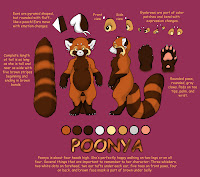
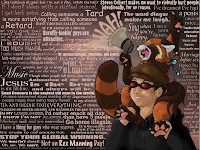
I asked Sara Joy president of ARF
to write about ARF and Furries and
the miss conception that happen in
general and here on campus.
So without further ado here are her words.
Name: Sara Joy
Age: 25
Year: Junior
Major: Illustration
The term “Furry” has become a word with a meaning that has been dragged through the mud. Often when someone unfamiliar with this term inquires about it, rarely do they get a favorable answer, let alone get it from someone who has any association with it whatsoever. Usually, one will get an answer like this: “They’re a bunch of freaks who wear tails and sit in the woods eating twigs and berries becasue they think they’re animals.” Or, “Oh, those are those wierdos who like to dress up in animal suits and screw each other.” Overall, it’s not a very flattering introduction, and it’s becasue of this misconstued information delivered by idiots that those who lable themselves “Furries” keep to themselves. So what exactly IS a Furry, and why such a crude branding? The answer is not as odd as you may think, and this time, it’ll be from the mouth of a Furry fan.
Birth Of The Fandom
Ultimately, Furry is a fandom. It is said to have been birthed as far back as the mid 1960’s, but was never really recognized as such until 1980. It was then that the concept of Furry originated at a science fiction convention when a drawing of a character from Steve Gallacci’s Albedo Anthropomorphics initiated a discussion of anthropomorphic characters in science fiction novels. In turn, this initiated a discussion group that met at science fiction and comics conventions regarding fictional mammalian anthropomorphic characters, soon to be known as Furries. Since then it has grown and evolved significantly to nearly a subculture, complete with it’s own style of art, prose, publication, conventions, and slang.
What Is A Furry?
“Furry,” not only defines the name of the fandom, but those involved in it. Furs, Fur-fans, and Anthros, are also terms that Furries go by. A Furry is a person who personifies with a particular fictional, anthropomorphic character. This character often reflects the personality of its creator or serves as secondary extention or alter-ego. These charcters are usually called Fursonas, a play on the word persona, meaning “one’s public image or personality, as distinguished from the inner self.” Furries tend to have a large appreciation for animation, video games, and comics that contain anthropomorphic characters. Characters from well known studios such as Disney and Warner Bros. are an inspiration to the fandom, particularly concerning the style, as art plays a huge role within the community. Often Furries will adopt this style and draw out their fursonas in much the same fashion.
ARF and Ringling
Here on the campus of Ringling College of Art and Design, I am the president of a club called A.R.F. (Anthropomorphic Ringling Fanclub). Though there are a handful of Furries that attend, I do my best not to promote A.R.F. as a "Furry" club, being that it is open to all students on campus and does not solely revolve around the Furry fandom. So, what happens at A.R.F.? For the most part, we get together to commute and unwind. A typical meeting consists of any updates regarding an upcoming event, sitting together to draw or do homework, with an occational movie to play in the background. As a club, we schedule trips, usually having to do with animals. We've been to several sanctuaries, to learn about and draw various animals, as well as volunteer our time to help out these non-profit organizations. We have also donated artwork to be auctioned off to help keep no-kill animal shelters open and running.
A.R.F. has been active with these advocations since the club was created 5 years ago, and still continues to grow with new memebers each year. Yet, just because students who call themselves Furries also attend, the good hearted efforts we've made are always overlooked, leaving nothing but the same nasty, hearsay labeling, from not only students, but faculty as well. FACULTY, of all things. Instead of stepping in with correction or discouraging the act of student degrading student as a teacher should do, they partake in the mockery. Not only does this make them look moronic, it reflects badly on the school as a whole and the social security that the students expect to receive.


Words words words
A series of typographic explorations dealing with word association from my spin chart.
Taking a word and placing it
in two different settings.
One a movie and the other
in a true natural setting.

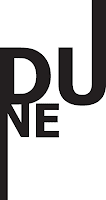
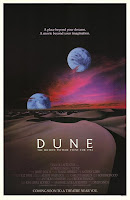
When Describing about a word
without saying the word you might
not guess the mean of it right away.
These next exploration are based on
that principle that the word is not
always clear through the description.
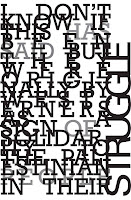





Taking a word and placing it
in two different settings.
One a movie and the other
in a true natural setting.



When Describing about a word
without saying the word you might
not guess the mean of it right away.
These next exploration are based on
that principle that the word is not
always clear through the description.






Wednesday, February 25, 2009
Think about section for my book.
1. The origination of almost all my exploration was through goggles.
so for that one I'm thinking, Shifting Details.
2. another chapter would be for bandannas. dealing with cultural perceptions.
so for that one I'm thinking, Pin pointing
3.next chapter would be about viewing icons in different manners.
This relates to my key chain experience.
so for that one I'm thinking, contextually
4. Another chapter could be on Cultural differences. This one could include the bandannas and the scarfs, how they are perceived in different cultures.
So for this one I'm thinking, Pin Pointing, or Over an ocean, or Crisscrossing, or Habitat*** I like that one.
5. Next is the self-perception.
How do you view yourself In different environments?
So for this one I'm thinking, Inside out
6.Next is my past how I thought the world would be compared to how it actually is
So for this one I'm thinking, Disappointment, reality
7. My next exploration is going to be about stereotypes. Focusing on a specific example of a friend of mine who loves animals but is viewed in a negative way. I'm going to include an interview with her. Bio info and imagery talking about how people like animals so called normal animals and how if you do something a little off beat it can be blown out of proportion. Take for example everyone loves Disney beauty and the beast and also in peter pan the lost boys are dressed in animals like a persona of who they are. There are many examples of how we look at a preconceived notion. In the end I'm going to break it down to show that this stereotype is not called for in the end.
So for this chapter I'm thinking. Bring down the False.
1. The origination of almost all my exploration was through goggles.
so for that one I'm thinking, Shifting Details.
2. another chapter would be for bandannas. dealing with cultural perceptions.
so for that one I'm thinking, Pin pointing
3.next chapter would be about viewing icons in different manners.
This relates to my key chain experience.
so for that one I'm thinking, contextually
4. Another chapter could be on Cultural differences. This one could include the bandannas and the scarfs, how they are perceived in different cultures.
So for this one I'm thinking, Pin Pointing, or Over an ocean, or Crisscrossing, or Habitat*** I like that one.
5. Next is the self-perception.
How do you view yourself In different environments?
So for this one I'm thinking, Inside out
6.Next is my past how I thought the world would be compared to how it actually is
So for this one I'm thinking, Disappointment, reality
7. My next exploration is going to be about stereotypes. Focusing on a specific example of a friend of mine who loves animals but is viewed in a negative way. I'm going to include an interview with her. Bio info and imagery talking about how people like animals so called normal animals and how if you do something a little off beat it can be blown out of proportion. Take for example everyone loves Disney beauty and the beast and also in peter pan the lost boys are dressed in animals like a persona of who they are. There are many examples of how we look at a preconceived notion. In the end I'm going to break it down to show that this stereotype is not called for in the end.
So for this chapter I'm thinking. Bring down the False.
Monday, February 23, 2009
Personal perception

After completing my last exploration with type this simple image sparked another round of explorations for me. How to view yourself using light. In the dark we view light in different ways than In the day. Its presents draws us in to specific points, are eyes squint to see everything around us, and the irises of our eyes get HUG! Can you picture living in total darkness.











Subscribe to:
Posts (Atom)